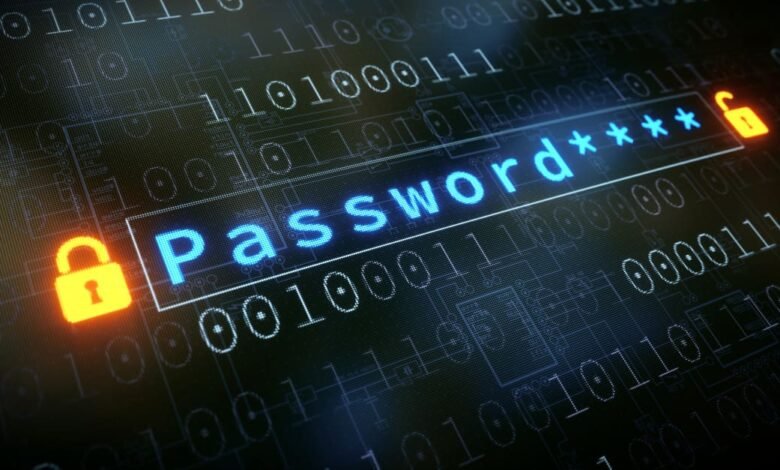
The humble password is a crucial defence against unauthorized access to sensitive information. However, weak passwords pose a significant security risk, leaving individuals and organizations vulnerable to cyber-attacks and data breaches.
Understanding the Threat: The Risks Posed by Weak Passwords
A weak password, typically consisting of easily guessable phrases, common words, or simple patterns, can be cracked by automated password-cracking tools in minutes or seconds. Once an attacker gains access to an account through a weak password, they can exploit it to steal sensitive information, compromise other accounts, or launch further cyber-attacks, posing significant risks to individuals and organizations.
Repercussions of Compromised Credentials: The High Cost of Security Breaches
The repercussions of compromised credentials extend far beyond the initial breach, often resulting in significant financial, reputational, and legal consequences for individuals and organizations. In practices where individuals may resort to hire someone to do my online exam, the fallout from compromised credentials can be particularly detrimental. This unauthorized access can result in financial losses due to identity theft, fraud, or extortion, as well as damage to an individual or organization’s reputation and trustworthiness. Moreover, security breaches involving compromised credentials may trigger legal liabilities, regulatory fines, and compliance violations, further exacerbating the high cost of security breaches. Therefore, individuals and organizations must prioritize password security and take proactive measures to mitigate the risk of compromised credentials, safeguarding their digital assets and protecting themselves from the far-reaching consequences of security breaches.
Common Password Pitfalls: Avoiding Common Mistakes in Password Creation
Several common pitfalls undermine password security and increase the risk of compromise. These include using easily guessable passwords such as “123456,” “password,” or “qwerty,” reusing passwords across multiple accounts, and neglecting to update passwords regularly. Additionally, sharing passwords with others, storing them in plaintext or unencrypted formats, or using publicly available information as password hints can compromise security and leave accounts vulnerable to exploitation. By recognizing and avoiding these common mistakes, individuals and organizations can strengthen their password security.
The Best Ways to Boost Password Security: Creating More Robust Defences
Thankfully, there are some recommended practices that people and businesses can do to improve password security and bolster their computing defences against online attacks. Among them are:
- Employ Robust and Distinctive Passwords: Craft robust and intricate passwords that combine capital and lowercase letters, digits, and unique characters. To avoid credential reuse, avoid using phrases or terms that are well-known or readily guessed, and make sure that each passcode is specific to each account.
2. Put Multifactor Authentication (MFA) into Practice: To provide an additional layer of protection on top of passwords, activate multifactor authentication (MFA) anywhere feasible. MFA strengthens users’ accounts’ security against unwanted access even if passwords are stolen by requiring users to give further verification, like a one-time code delivered to their email or cell phone. - Regularly Update Passwords: Regularly update passwords and change them immediately if there is any suspicion of compromise or unauthorized access. Establish a password rotation policy and encourage users to update their passwords periodically to mitigate the risk of credential-based attacks.
- Utilize Password Managers: Use password managers to store and manage passwords for multiple accounts securely. Encrypt them using advanced encryption algorithms, providing a convenient and secure way to manage passwords across devices and platforms.
- Educate Users About Password Security: It encourage users to adopt password hygiene habits such as avoiding password sharing, using caution when entering passwords on shared or public devices, and promptly reporting any suspicious activities or security incidents.
Continuous Monitoring and Enforcement: Maintaining Vigilance Against Weak Passwords
Even with robust password policies and security measures, the battle against weak passwords doesn’t end at implementation. Continuous monitoring and enforcement are essential to maintaining vigilance against the threat of compromised credentials. Organizations should regularly audit password practices, conduct security assessments, and monitor account activity for signs of suspicious behaviour. Automated tools can help identify weak or compromised passwords, flagging them for immediate action, such as password resets or account lockouts. Additionally, enforcing strict password policies, such as minimum length requirements, complexity rules, and password expiration periods, helps reinforce the importance of strong password hygiene and reduces the risk of password-related security incidents. By remaining vigilant and proactive in monitoring and enforcing password security measures.
Investing in Passwordless Authentication Solutions: Embracing the Future of Authentication
As the threat landscape evolves and traditional password-based authentication methods become increasingly vulnerable to attacks, organizations turn to passwordless authentication solutions as a more secure and user-friendly alternative. Passwordless authentication eliminates the need for passwords, relying on alternative authentication factors such as biometrics, hardware tokens, or cryptographic keys to verify user identities. By eliminating the reliance on passwords, passwordless authentication solutions reduce the risk of credential-based attacks and provide a more seamless and frictionless user experience. As organizations prioritize security and user convenience, investing in passwordless authentication solutions represents a forward-thinking approach to authentication that promises to revolutionize how we secure access to digital resources.
Collaboration and Industry Initiatives: Working Together to Combat Weak Passwords
Addressing the challenge of weak passwords requires collective action and collaboration across industries, governments, and cybersecurity stakeholders. Industry initiatives such as the FIDO Alliance and the World Password Day campaign aim to raise awareness about password security best practices, promote the adoption of stronger authentication methods, and drive innovation in authentication technologies. By joining forces with industry peers, sharing insights and resources, and collaborating on common challenges, organizations can collectively strengthen their defences against weak passwords and create a more resilient and secure digital ecosystem for all.
Empowering Users Through Education and Awareness: The Key to Stronger Password Security
In the fight against weak passwords, education and awareness play a crucial role in empowering users to adopt stronger password security practices. By promoting a culture of security awareness and instilling good password hygiene habits among users, organizations can significantly reduce the likelihood of password-related security incidents and strengthen their overall security posture. Ultimately, by equipping users with the knowledge and tools to safeguard their passwords effectively, organizations can build a more resilient defence against weak passwords.
Conclusion: Strengthening Password Security for a Safer Digital Future
In conclusion, weak passwords remain a significant security barrier in today’s digital landscape, posing a constant threat to individuals, businesses, and organizations worldwide. By understanding the risks posed by weak passwords, adopting best practices for password security, investing in passwordless authentication solutions, and collaborating with industry peers, we can collectively strengthen password security and build a safer and more secure digital future. Password security is a technical challenge and a cultural and organizational imperative that requires ongoing commitment, vigilance, and collaboration to address effectively. By prioritizing password security and embracing innovative authentication solutions, we can turn the tide against weak passwords and create a more resilient and secure digital ecosystem for generations.



